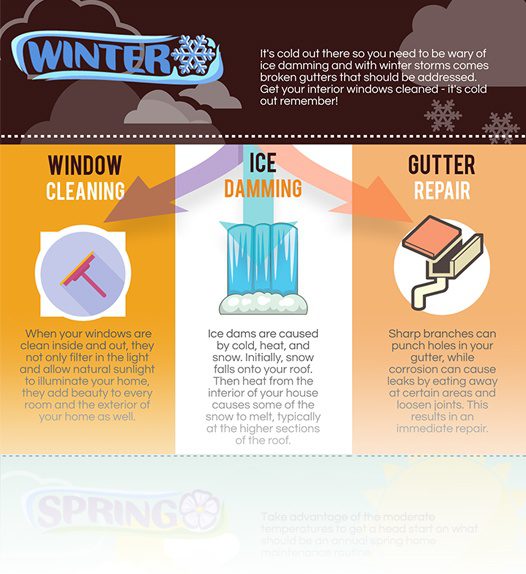Recognize The Essential Stress Cleaning Methods Customized For Each And Every Type Of Surface To Generate Exceptional Results-- Expose The Secrets To A Pristine Finish
Recognize The Essential Stress Cleaning Methods Customized For Each And Every Type Of Surface To Generate Exceptional Results-- Expose The Secrets To A Pristine Finish
Blog Article
Created By-Vazquez Bock
When it concerns press washing, the technique you select can make all the difference in achieving a clean, streak-free surface. You might locate that difficult surface areas, like concrete, need a various method than softer products, such as wood or plastic. It's important to adapt your methods to the surface area type to avoid damages while making the most of cleaning efficiency. So, what are the most effective methods for every surface, and exactly how can you ensure you're using the best settings and devices for the job? Let's discover what you need to recognize to obtain the very best outcomes.
Tough Surface areas
When it pertains to pressure washing difficult surface areas, prep work is vital. Prior to home window cleaning kit think of pulling out the stress washing machine, make the effort to get rid of the location of any type of particles, furnishings, or challenges. You do not want anything entering your method or potentially harmful your equipment.
Next off, inspect the surface area for any type of fractures or damages; this will aid you determine the ideal method and pressure settings.
Once you've prepared the location, it's vital to pick the appropriate nozzle. For tough surface areas like concrete or block, a narrow nozzle (15 or 25 degrees) works best to provide a concentrated stream of water that can properly get rid of crud and spots. Constantly start at a distance and slowly relocate closer to prevent any kind of surface area damage.
As you begin washing, maintain the wand relocating to protect against streaks and over-saturation. It's likewise useful to function from the top down, allowing dirt and debris to remove normally.
Finally, remember to wash the surface area completely after cleaning to eliminate any kind of leftover detergent. With these techniques, you'll achieve a tidy and refreshed appearance on all your difficult surfaces.
Soft Surfaces
Stress cleaning soft surfaces requires a gentler technique to safeguard them from damages. Whether you're cleansing your deck, patio furnishings, or home siding, using too much pressure can bring about dents, scratches, or perhaps permanent harm.
Beginning by selecting a low-pressure nozzle, preferably a 25-degree or wider spray pattern, to distribute the water a lot more carefully.
Before you start, it's essential to pre-treat any type of spots with an appropriate cleaning solution. This action permits the cleaner to pass through the dirt and gunk, making it less complicated to get rid of without rubbing as well hard.
Always apply the option from all-time low up to protect against spotting.
When clicking here begin stress cleaning, keep a range of at the very least 12 to 18 inches from the surface. Move your stick in a sweeping movement, maintaining it alongside the surface area to stay clear of concentrated pressure on one area.
Wash the area thoroughly after cleaning to get rid of any residual cleanser.
Finally, evaluate the surface area for any missed out on areas and repeat the procedure if needed. By following these actions, you can successfully clean soft surfaces while preserving their honesty and appearance.
Specialized Surfaces
Cleansing soft surface areas requires treatment, however specialized surface areas demand much more focus to detail. When you deal with these surfaces, like fragile wood, stained concrete, or specific sorts of home siding, making use of the appropriate pressure cleaning techniques is important to stay clear of damages.
First, analyze the product. For instance, dealt with timber can typically stand up to moderate stress, but softer timbers like cedar may need a lower setting. Constantly start with the lowest stress and slowly enhance if necessary.
For stained concrete, use a fan spray nozzle and keep a consistent distance to stop etching the surface area.
When handling surfaces like vinyl house siding or repainted surfaces, a wide spray pattern aids distribute the stress equally, protecting the surface.
It's also a good idea to use cleaning agents specifically created for specialized surface areas. They can boost cleaning without jeopardizing the material.
Rinse completely after washing to get rid of any type of residue, as it can cause discoloration or wear and tear with time.
Conclusion
Finally, understanding stress washing methods for various surfaces can make all the distinction in your cleaning results. For hard surface areas, stick to narrow nozzles and a top-to-bottom approach, while soft surfaces require a gentler touch with larger nozzles. Don't neglect to pre-treat discolorations and wash thoroughly to stay clear of deposit. By adapting your techniques per material, you'll not only accomplish a cleaner surface but also shield the honesty of your surfaces. Satisfied cleansing!
